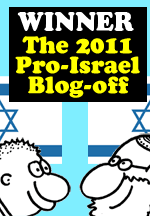By Lord Jonathan Sacks: It was an invitation I could not refuse. Next month I will be joining the Dalai Lama at Emory University for a seminar on happiness. It appealed to me first because the Dalai Lama is, like Nelson Mandela, one of those rare figures who has led his people through suffering by forgiveness.
Elaine and I spent several days with him and other religious leaders two years ago in Amritsar as guests of the Elijah Foundation, an interfaith organisation based in Israel. We were impressed by his warmth, humanity and lack of pretentiousness. We were moved by the way he spoke about his special affinity for Jews. They are, for him, role models of survival in exile, as he and his followers have been condemned to since 1959.
The other reason has to do with the theme itself: happiness. Sometimes we forget that Judaism is about happiness. The great issues of contemporary Jewish life - antisemitism, the physical and moral assault on Israel, and the continuing attritions of outmarriage and disaffiliation - are all negative ones. If taken as definitive, they add up to what I call the Oy vey theory of Jewishness, or what French-Jewish academic Esther Benbassa calls 'suffering as identity'.
This is a wrong turning for Jews and Judaism. It misreads our past and will damage our future. It fails utterly to understand Judaism's most paradoxical and profound truth, that we can be surrounded by danger yet rejoice. Faith is the ability to celebrate even in the midst of fears and tears. This is a rare insight, and it forms the deep logic of the festivals of Tishri.
It begins with a specific Rosh Hashanah, almost two and a half thousand years ago. Jews had returned, in two waves, from Babylon. The Temple had been rebuilt. But there was a deep national malaise. Jewish identity was weak. The Jewish family was in disarray. Many of the people could not even speak Ivrit. Ezra, the scribe, and Nehemiah, the governor, convened the people at the Water Gate in Jerusalem. Their aim? National rededication. They wanted to remind the people that they remained the people of the book. They wanted, in short, to renew the covenant.
What they did turned out to be one of the great transformative moments in Jewish history. Essentially, it was a massive adult education seminar. Ezra, standing on a high wooden platform, publicly read the Torah. Throughout the crowd he had stationed Levites - nowadays we would call them outreach workers - to explain to the people what was being said.
As the reading proceeded and people began to understand how far they had drifted, they began weeping. It was at that point that Nehemiah said: 'Do not mourn or weep. Go and enjoy choice food and sweet drinks, and send some to those who have nothing prepared. This day is sacred to our Lord. Do not grieve, for the joy of the Lord is your strength' (Nehemiah 8: 9-10).
Any lesser leader would have taken the people's weeping as a good sign. It showed that they felt remorse and guilt. But Nehemiah understood that Judaism is about joy - and people who are joyous can change, repent, return and grow more readily than those for whom faith is about fear and a sense of inadequacy. People who are fearful do not change.
So Rosh Hashanah has a dimension of joy. What is even more unexpected is an ancient tradition that says that Yom Kippur, together with the 15th of Av, was 'the happiest day of the year' (Mishnah Ta'anit 4: 8). On it, the daughters of Jerusalem used to go out, dressed in white clothes - borrowed, so as not to put to shame those who were not able to afford them - and dance in the vineyards where they were watched by the young men.
Today it seems almost inconceivable that a matchmaking ceremony with its apparent levity actually took place on the most awesome day of the year. But it makes sense if we recall that Yom Kippur historically was the day on which Moses descended from Mount Sinai with the second set of tablets, showing that the Israelites had been forgiven the sin of the golden calf. In Temple times, when the people saw the high priest emerge unscathed from his ordeal, they rejoiced.
It may not be the way we do things now, but it remains a beautiful idea that Yom Kippur, when we are at our most spiritual, when our sins are forgiven and our future is being ordained, should have been the day when single Jewish women would dress in white and the unmarried men would chose their wives. To this day, though we no longer celebrate Yom Kippur as a wedding, many brides and grooms have the custom to celebrate their wedding as if it were Yom Kippur, fasting before the ceremony and saying the special confession taken from the Yom Kippur Amidah.
So, counter-intuitively, there is a dimension of rejoicing on both Rosh Hashanah and Yom Kippur. The other festive days of Tishri are explicitly about celebration. Succot is zeman simchatenu, the festival of joy. Yet this too is surprising. Pesach, the festival of liberation, or Shavuot, the anniversary of our ancestors' covenant with God, are surely more likely candidates for that title. Succot recalls the years of wandering in the desert, exposed to the elements: heat by day, cold by night. I call Succot the festival of insecurity. The fact that Jewish tradition gave it the name of simchah tells us something deep about Jewish resilience and joy-in-adversity.
Even the megillah we read on Succot, Kohelet (Ecclesiastes), is an unexpected commentary on the nature of Jewish happiness. Kohelet is the man who has everything: gold, silver, houses, vineyards, gardens, parks, servants, yet it all adds up to weariness of spirit and a sense that everything is meaningless. Read it closely, though, and you discover that s-m-ch, rejoice, is a key word- it occurs 17 times in the book. Kohelet's message is that joy is to be found in simple things: love, work, marriage, doing good. That is a very Jewish message. The sources of happiness are not remote or aspirational. They lie all around us.
This is a long way from the Judaism of Freud, Kafka, Philip Roth and Woody Allen, the Judaism of conflict, guilt and neurosis, interminable suffering and unendurable complaint, the Judaism of kvetching, krechtsing and kibbitzing, of 'they all hate us' and z'is schver zu sein a Yid ('it's hard to be a Jew'). Rightly so, because that is what you get when you take Judaism and subtract from it faith, hope and God.
Judaism is a sustained tutorial in how to find happiness in the heart of striving, joy in the midst of pain, beauty in the everyday and exhilaration even in ritual and routine. The idea of ivdu et Hashem besimchah, serving God in joy, is one of the greatest contributions Judaism ever made to the life of the spirit. That is why I feel a strong sense of kinship with the Dalai Lama, and he with the Jewish experience. Life is too short not to celebrate it. Where we find joy, there we find God." (source)






